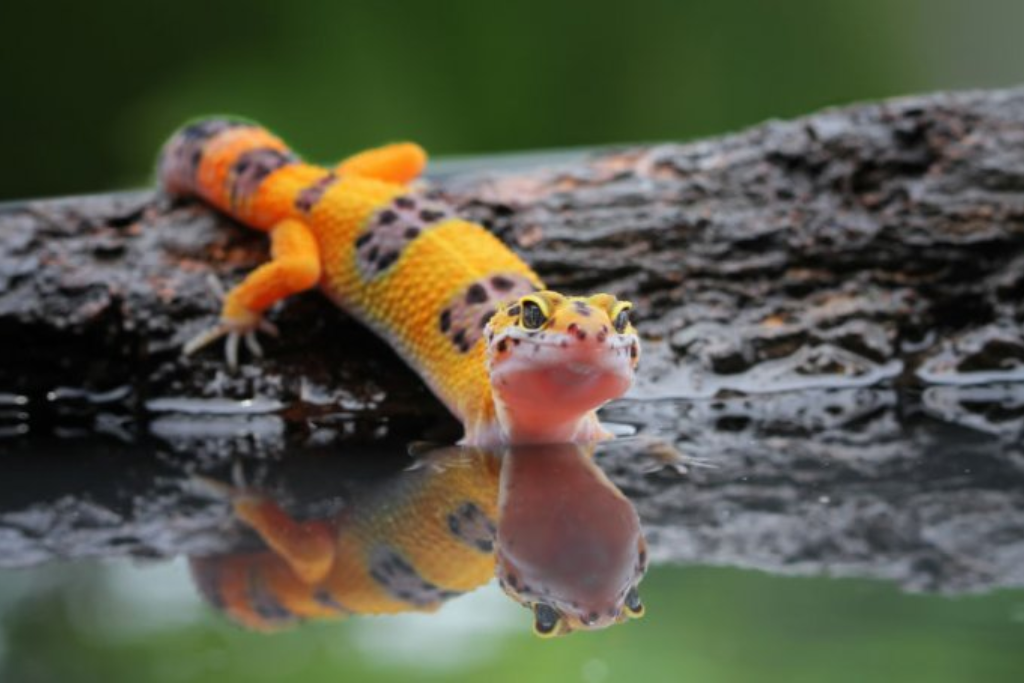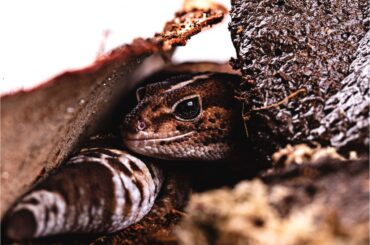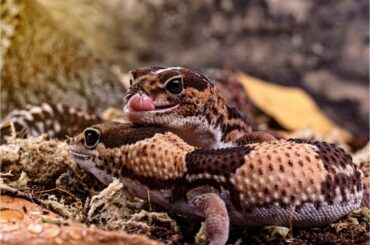Do you own a leopard gecko and wonder if they need baths for their well-being? Are you searching for an expert guide on how to keep your leopard gecko happy and healthy?
Leopard geckos, or Eublepharis macularius, are exotic pets from Pakistan, Afghanistan, and India. These small reptiles have spotted patterns on their skin and a unique ability to store fat in their tails. Owners should know the specific care these reptiles need to maintain their striking looks.
Bathing a leopard gecko is one of the most debated aspects of this reptile. Some believe bathing them is essential for hygiene and hydration, while others say it can cause stress and discomfort.
This article will explore different aspects of leopard gecko baths. You’ll get to know the benefits, best practices, and alternatives to bathing to ensure the overall well-being of your small reptiles.
So, if you’re an expert or a new pet owner of a leopard gecko, this article will teach you how to take care of your scaly friend.
The Need For Bathing
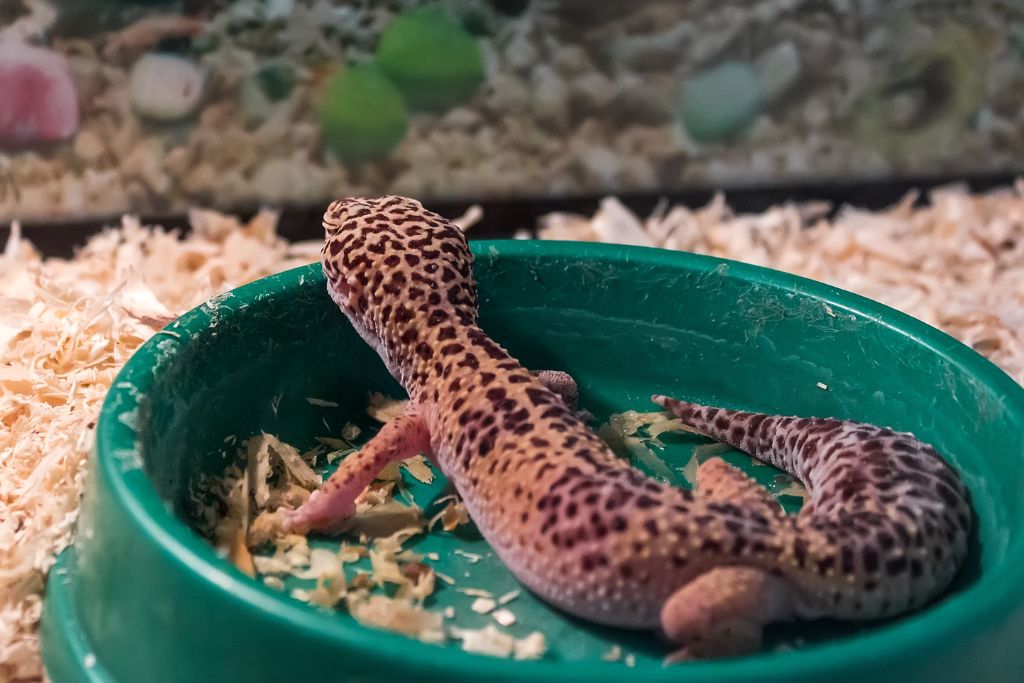
As for the natural habitat, leopard geckos can typically be seen in the wild, especially in rocky, arid terrain with minimal space for greens. Leopard geckos enjoy solitude and spend most of their days hiding in caves to avoid the sunlight.
About hygiene, leopard geckos use their long, flexible tongues to clean and remove the dust and dirt from their scales. These small reptiles may put themselves in rainwater or dew to shed off their old skin. Leopard geckos also have femoral pores in their hind legs, which produce waxy secretions used as a scent to repel parasites.
In captivity, leopard geckos practice various hygiene routines. It is crucial to provide geckos with a dish of water for drinking and soaking in when enclosed in a terrarium.
Owners must also know how to maintain a healthy captive environment since geckos can’t rely on the natural processes they use in the wild.
Benefits of Bathing
Can I bathe my leopard gecko? This might be one of the questions you have in mind before bathing the said reptile. But before doing so, it is essential for you as owner to be aware of the benefits of bathing leopard geckos.
- Promotes Healthy Shedding: Regular leopard gecko baths can help maintain overall skin health. This is because bathing this reptile will enable it to soften its skin, making it easier for shedding.
- Prevents Dehydration: Bathing a leopard gecko serves as an opportunity for them not only to be clean but also to be hydrated. They may drink water while bathing, especially if they cannot hydrate themselves as much.
- Aids in Digestion: Bathing leopard geckos helps stimulate their bowel movements. Digestive health is considered crucial for gecko’s overall well-being.
- Hygiene Maintenance: Regular baths help remove dirt and fecal matter from the gecko’s skin. When geckos are clean they are far from having infections and skin issues.
- Stress Reduction: A gentle yet proper way of bathing will be a relaxing experience for your leopard geckos. When done correctly, your geckos will feel happy and stress-free after every bath.
- Monitoring Health: Since bathing is a close encounter with a gecko, you’ll observe any potential health issues before it’s too late.
- Bonding and Taming: Bathing offers a sense of touch needed in trust-building between you and your reptile pet.
Preparing for a Successful Bath
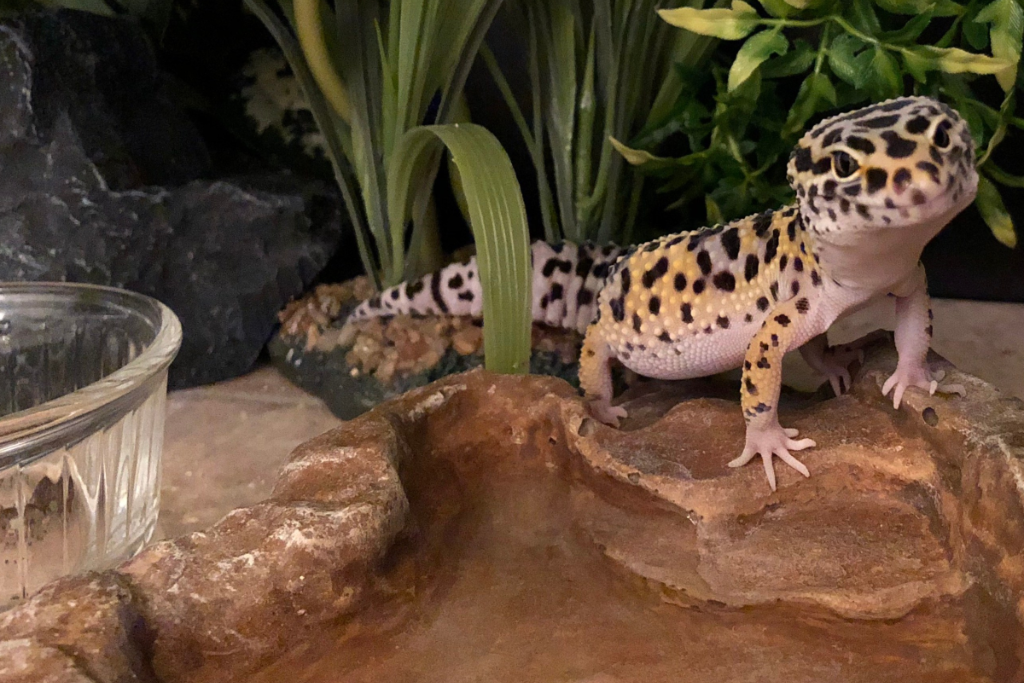
Given the benefits of bathing a leopard gecko, it is also essential for every pet owner to know the preparation needed for a successful bath. Knowing what to prepare for a healthy bath will save you and your gecko from stress and possible injury.
- Choose the Right Container: Use a quality and shallow container that suits your gecko’s size. Ensure a dependable container either made from plastic or a reptile bath box to soak in your pet comfortably.
- Ensure the Correct Water Temperature: The ideal water temperature for bathing a leopard gecko is around 85-90°F (29-32°C). Avoid using hot or cold water because this will stress your gecko out.
- Create a Safe, Stress-Free Space: Give them a safe, quiet, and non-slip space by putting a rock or a textured mat inside the container.
How To Soak Your Leopard Gecko: Bathing Techniques
Understanding the importance of proper hygiene and hydration is essential for a healthy gecko pet. Leopard gecko baths can provide reptile comfort and stress, as well. To prevent stressful conditions from occurring, the bathing techniques for leopard geckos are listed below.
- Shallow Water Baths: This is the most common way of bathing a leopard gecko. Make sure to use a shallow container filled with lukewarm water that covers the gecko’s legs.
- Misting Methods: Maintain the humidity levels inside the gecko’s terrarium by spraying lukewarm water. One drawback of this technique is that it may not address the shedding issue and will not be able to encourage drinking among geckos.
- Damp Hide Boxes: Let your gecko enter damp hide boxes with an eco-friendly coconut coir inside. This method offers a natural way of increasing humidity as the gecko enters the boxes. It also further assists the small reptile with their skin shedding.
- Enclosure Design: Place a water dish on one side of the terrarium to maintain a humidity gradient inside the enclosure. This allows geckos to be independent in fulfilling their hydration needs.
- Infrequent Bathing: It is advised to have a scheduled bathing session according to a specific situation. Consider bathing a leopard gecko when there is a stuck shed or impaction.
Observing Your Gecko’s Behavior
Owners must monitor the gecko’s body language and behaviors to ensure comfortable bathing. Note that a relaxed gecko will show smooth and fluid movements in the water, while a tense one will stay immobile and try to escape the water due to stress. When this happens, immediately remove the geckos from the water to avoid further discomfort.
You can tell that geckos enjoy their bath when they display active exploration, gentle swimming, or soaking in the water. They also lick water droplets in their bodies to show they have fun bathing.
Pet owners are encouraged to observe geckos keenly because of their various personalities. Knowing their bath behavior will enable you to create a positive environment and improve bathing practices.
Handling and Drying
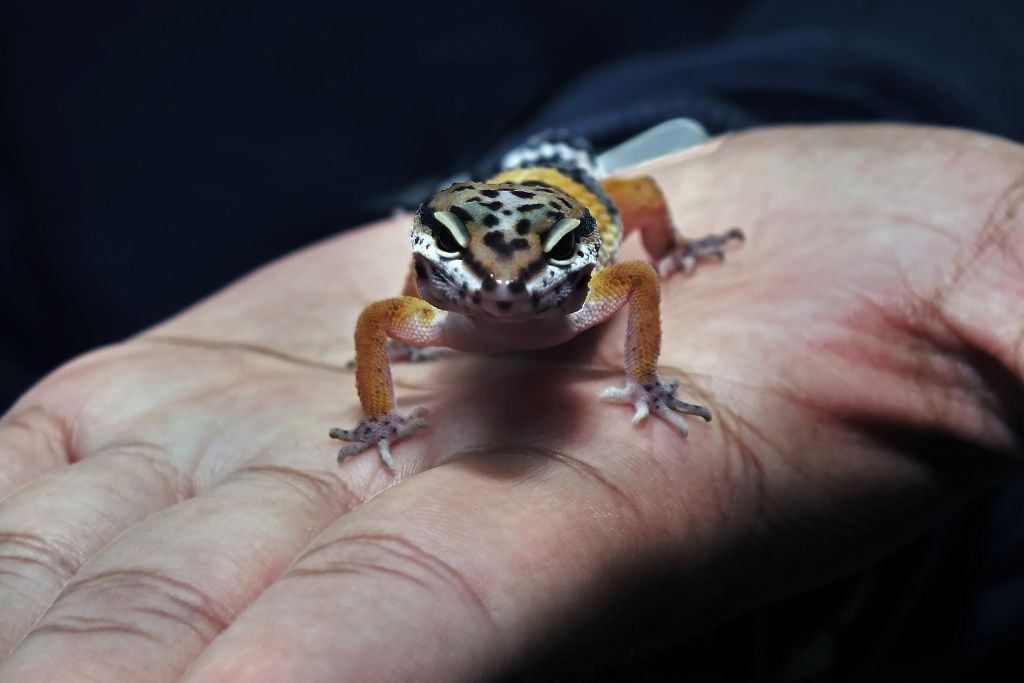
Leopard geckos are distinctly small reptile pets that require proper handling and care. Here are the following techniques to handling and drying your leopard geckos:
- Before Bathing: Prior to bathing leopard geckos, it is crucial to identify the proper handling they need to make them feel comfortable. Know that leopard geckos are delicate reptiles with sensitive skin.
- Safe Handling During Bathing: Please be mindful of your movements during and after bathing a leopard gecko. Using gentle and steady actions to prevent stress and support their body with your hands is recommended.
- Drying to Prevent Chill: Dry your gecko using a soft, clean towel to avoid chills. Don’t apply too much pressure as their skin is sensitive and fragile.
- Warm Environment Post-Bath: After bathing your gecko, put them in an enclosed area after drying. Ensure an appropriate temperature to help your pets recover immediately after the bath.
Frequency of Baths
The required interval for bathing leopard geckos is affected by age, shedding cycle, and overall health. These pets are low-maintenance reptiles requiring an interval of every 2 to 4 weeks of bathing for adult geckos.
On the other hand, juvenile geckos require more frequent bathing, around once a week, to help with shedding and hydration
Adapting to your gecko’s needs involves observing their behavior and condition. Water temperature should be watched, and their skin should be observed for any issues.
Having a flexible approach and attentive care are the keys to know the right bathing schedule for your gecko.
Potential Mistakes To Avoid
Perfect water temperature and a comfortable, non-slip bathing area should be practiced for a better cleansing experience for your geckos. To maintain a gecko’s comfort, here are some potential mistakes to avoid when bathing a leopard gecko:
- Temperature Extremes: Too hot or too cold water should be avoided because it can cause stress and harm your leopard gecko. The ideal water to be used is lukewarm.
- Rough Handling: Handle your gecko with care during and after the bath. Always support their fragile body to avoid potential injuries.
- Inadequate Drying: Always dry your gecko thoroughly after every bath to avoid possible chilling. Prepare a warm environment where you can place them post-bath.
Final Thoughts
Proper bathing is essential for the well-being of your leopard gecko. It will lead to gecko’s skin health, improve the shedding process, and address hydration and digestive issues.
That’s why it is important to be consistent in providing geckos the care they need for them to flourish in their environment. Make sure to apply the knowledge you acquired regarding proper bathing to keep your pets happy, comfortable, and healthy.
FAQs
Can Leopard Geckos Bathe In Tap Water?
It is not recommended for geckos to bathe in tap water, as this may cause them stress and discomfort. Lukewarm water is advised for bathing a leopard gecko.
Can Leopard Geckos Get Wet?
Yes, leopard geckos can get wet. However, frequent exposure to water is not recommended, for this may cause them stress and health issues.
Do Leopard Geckos Need Baths?
No leopard geckos don’t need regular baths. But you can soak them in a shallow dish with water for hydration and addressing shedding issues.

